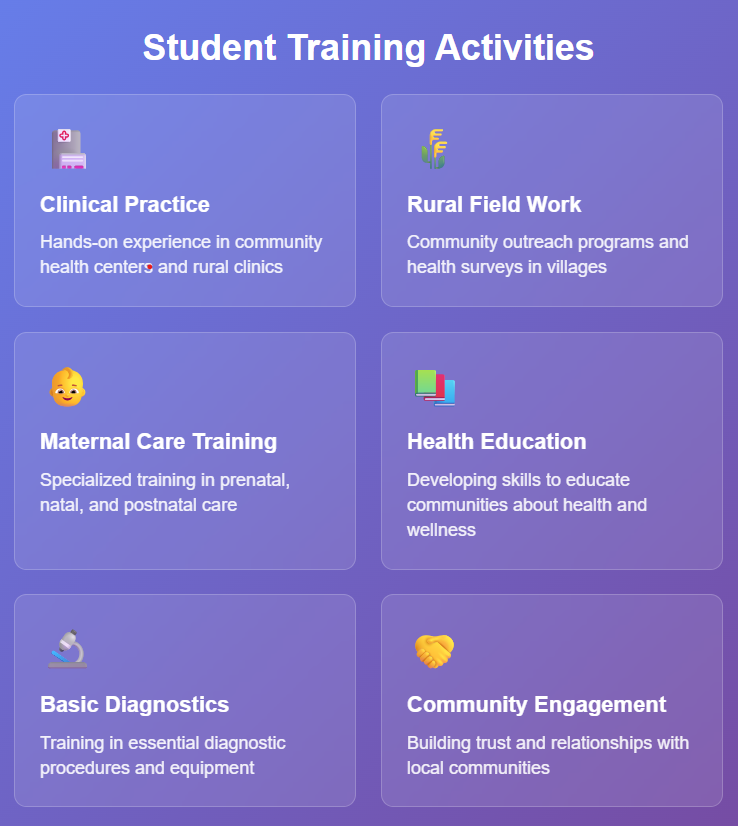Understanding Primary Health Care Schools
Primary health care schools are educational institutions dedicated to training healthcare professionals who will work in community-based settings, rural areas, and underserved populations. Unlike traditional medical schools that focus primarily on specialized care, these institutions emphasize comprehensive, accessible, and community-oriented health services. They prepare students to become community health workers, primary care nurses, physician assistants, and other frontline healthcare providers.
The curriculum in these schools is carefully designed to address the real-world health challenges that communities face daily. Students learn not only clinical skills but also community engagement, health promotion, disease prevention, and basic emergency care. The training emphasizes cultural competency, communication skills, and the ability to work effectively within limited resource settings.
The Multifaceted Role of Primary Health Care Schools
Primary health care schools play several interconnected roles within the healthcare education ecosystem. Their primary function involves training healthcare workers who can provide essential health services including preventive care, basic treatment of common illnesses, maternal and child health services, immunizations, and health education. These institutions serve as bridges between formal medical education and community health needs.
These schools also function as research centers, studying community health patterns, developing culturally appropriate health interventions, and evaluating the effectiveness of various primary care approaches. Faculty and students often engage in community-based research that directly benefits local populations while advancing the field of primary health care.
Additionally, primary health care schools serve as policy advocates, influencing healthcare policies at local, regional, and national levels. Their close connection to community health needs positions them uniquely to identify gaps in healthcare delivery and recommend evidence-based solutions to policymakers.
Training Philosophy and Approach
The educational philosophy of primary health care schools centers on the principle that healthcare should be accessible, affordable, and appropriate to community needs. This approach emphasizes practical skills over theoretical knowledge, though both remain important. Students learn to diagnose and treat common conditions, provide preventive care, and recognize when to refer patients to higher levels of care.
The training methodology typically combines classroom instruction with extensive fieldwork and community placements. Students spend considerable time in rural clinics, community health centers, and outreach programs, gaining hands-on experience while providing supervised care to underserved populations. This experiential learning approach ensures that graduates are well-prepared for the realities of primary health care delivery.
Curriculum and Specializations
The curriculum in primary health care schools encompasses a broad range of subjects designed to produce well-rounded healthcare professionals. Core subjects typically include basic medical sciences, community health, epidemiology, health promotion, disease prevention, clinical skills, emergency care, maternal and child health, nutrition, and health management.
Many schools offer specialized tracks or concentrations based on community needs and student interests. These might include rural health, urban community health, maternal and child health, chronic disease management, mental health, or health education and promotion. Some programs also incorporate traditional medicine practices and integrate them with modern healthcare approaches.
The curriculum often emphasizes interprofessional education, teaching students to work collaboratively with other healthcare professionals, social workers, teachers, and community leaders. This approach recognizes that health is influenced by multiple factors beyond medical treatment and requires coordinated community-wide efforts.
Impact on Healthcare Accessibility
Primary health care schools have a profound impact on healthcare accessibility, particularly in underserved areas. By training healthcare workers specifically for primary care roles, these institutions help address the shortage of healthcare professionals in rural and remote communities. Graduates often return to their home communities or choose to work in similar underserved areas, bringing essential health services closer to those who need them most.
The training provided by these schools enables healthcare workers to provide a wide range of services that might otherwise require visits to distant hospitals or specialized clinics. This includes routine check-ups, vaccinations, basic diagnostic services,


i am grateful for ayurdhara